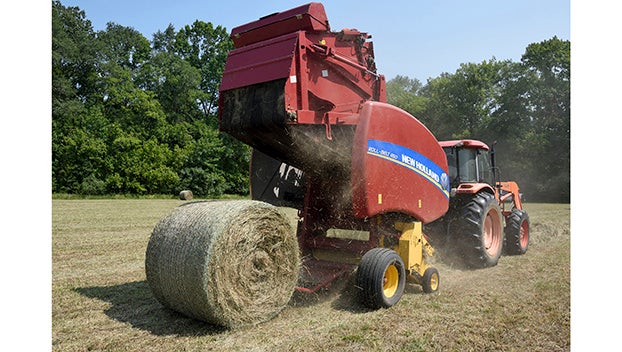
Hay, prevent bale fires with these safety tips
Published 11:35 am Monday, August 29, 2022
STARKVILLE, Miss. — Late summer and early fall are when many growers begin thinking about when to make their last cut of hay each year, but safety should always be the top priority of anyone operating a baler, whether it is May or October.
Regular equipment maintenance and inspections are the best ways to prevent hay baler fires, but disaster can sometimes happen regardless of good upkeep and storage practices.
“Hay baler fires are fairly common, and if you don’t know what to do or fail to act immediately, they can destroy both the baler and your tractor,” said Leslie Woolington, risk management and loss control agent with the Mississippi State University Extension Service.
Woolington said eyes and ears are the most important safety features available to baler operators.
“If something looks, sounds or feels different, stop and investigate,” she said. “Bearings and other mechanical parts will usually give an indication of a problem before they turn into emergency problems, so don’t ignore these signs.”
If hay dust changes color, for instance, there might already be a fire present.
“With a hay baler, it may take some time before a smoldering ember is evident,” Woolington said. “You must be prepared to act quickly when you see that first indication of smoke.”
As a hay grower and former volunteer firefighter, Franklin County farmer Horace Godbold has seen his share of baler fires. Another indication that something may be wrong, he said, is if the operator begins to smell something burning. Cab tractor drivers should keep a window open if possible so they can smell the outside air.
“If you smell something out of the ordinary, you need to get off the tractor and inspect the baler from all angles, because it’s probably about to catch on fire if it’s not already on fire,” he said.
A fire extinguisher with an ABC rating is a must for any large tractor, but Godbold and Woolington recommend storing a water extinguisher, which sprays streams strong enough to penetrate hay and reach smoldering hot spots.
“Something I always take with me is a pump-up sprayer with a nozzle. If you mix water and dishwashing detergent, it makes your water last twice as long,” Godbold said. “You can adjust the nozzle to get a larger volume of water in a fog pattern at the base of the fire. This will turn the water to steam that follows the direction of the fire and knocks it down.”
Thermal imaging or an inexpensive infrared laser thermometer can also be used to check for hot spots.
“I know a hay farmer who points at each one of the bearings on his baler to see if he has one heating up,” Godbold said. “When he gets done baling, he will repeat that to see if he needs to change any of the bearings out before he starts baling again.”
How and which direction the operator bales hay can also prevent a disaster.
“I try to break the field up into sections and start on the downwind side, so if I do have a fire, it won’t be floating across the dry hay,” he said.
Ensuring the baler is clean before attaching it to the tractor is one of the most effective ways to prevent it from catching fire.
“A hay baler is just a big container of fuel for a fire — hay, dust and hydraulic fluid,” Woolington said. “Eliminate any extra fire sources by cleaning the baler up thoroughly after each cutting. Use an air hose or leaf blower to blow out all the fine pieces and dust.
“Open doors, shields and guards to clean debris from inside those, as well,” she added, “but be sure they are back in place, as they not only protect the operator from hazards but also help prevent accumulation of hay and dust in friction areas.”
Maintenance should be performed each year before the first cutting because that saves time and money in addition to preventing a fire.
“Identifying potential problems early will help allow time to order parts or schedule a service call for a mechanic,” said Keith Whitehead, an MSU Extension agent in Franklin County. “Because hay baler fires are usually the result of sparks or heat, keep the belts at proper tension and bearings, chains and other moving parts greased and lubricated. Hydraulic leaks from hoses or cylinders will also contribute fuel to a fire, so check for those to avoid equipment failure.”
https://ift.tt/IsbG3F9
Tidak ada komentar:
Posting Komentar